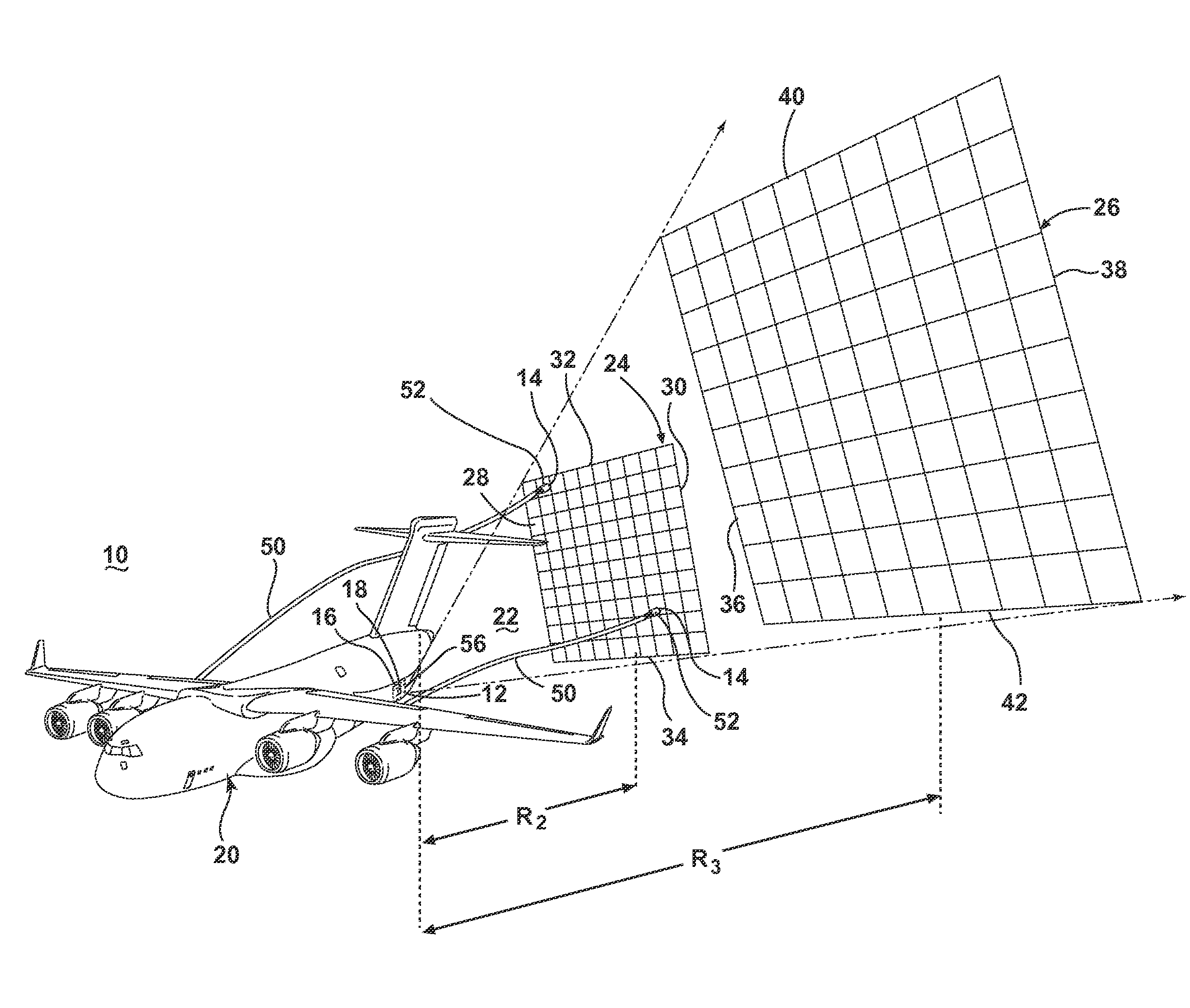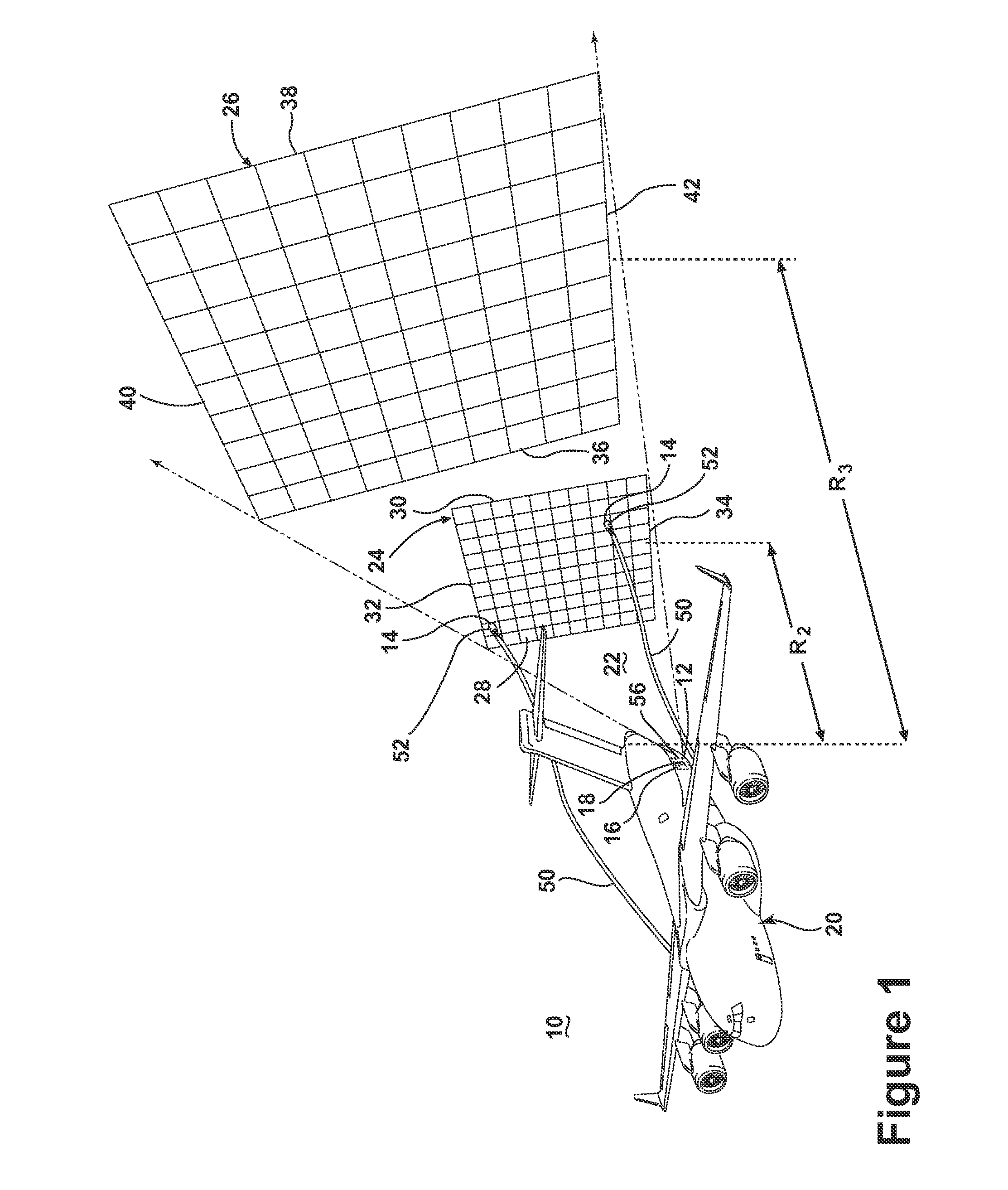System and method for utilizing multiple sensors
a technology of sensors and sensors, applied in the field of systems and methods for utilizing multiple sensors, can solve the problems of significantly less information available from the current airborne sensor system, limited three-dimensional feature extraction,
- Summary
- Abstract
- Description
- Claims
- Application Information
AI Technical Summary
Benefits of technology
Problems solved by technology
Method used
Image
Examples
Embodiment Construction
[0008]The embodiments of the present invention are related to a sensor system and methods of utilizing multiple airborne sensors. FIG. 1 illustrates an embodiment of the sensor system 10, which has been illustrated as including a grid generator 12, multiple sensors 14, a position detector 16, and a coordination engine 18 operably coupled with an aircraft 20. More specifically, the aircraft 20 may be equipped with a grid generator 12, which may project a relative navigation grid, such as a plurality of intersecting lines, into space within a field of transmission 22. The general details of how to project the relative navigation grid are known in the art, which include the disclosure in U.S. Pat. No. 7,681,839, issued Mar. 23, 2010, entitled Optical Tracking System For Refueling, and US 2011 / 0153205, published Jun. 23, 2011, entitled Relative Navigation System, both of which are incorporated by reference. Therefore, the specific details of the grid generation will not be fully describ...
PUM
 Login to View More
Login to View More Abstract
Description
Claims
Application Information
 Login to View More
Login to View More - R&D
- Intellectual Property
- Life Sciences
- Materials
- Tech Scout
- Unparalleled Data Quality
- Higher Quality Content
- 60% Fewer Hallucinations
Browse by: Latest US Patents, China's latest patents, Technical Efficacy Thesaurus, Application Domain, Technology Topic, Popular Technical Reports.
© 2025 PatSnap. All rights reserved.Legal|Privacy policy|Modern Slavery Act Transparency Statement|Sitemap|About US| Contact US: help@patsnap.com



